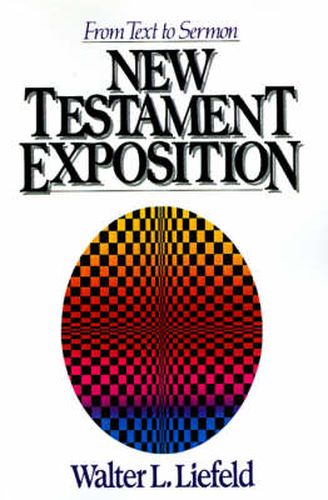Readings Newsletter
Become a Readings Member to make your shopping experience even easier.
Sign in or sign up for free!
You’re not far away from qualifying for FREE standard shipping within Australia
You’ve qualified for FREE standard shipping within Australia
The cart is loading…






Expository preaching is an elusive ideal. Many preachers aspire to it, few are acknowledged masters. For most a gap exists between the sermon that addresses the needs of the hearers and one that methodically plumbs the depths of Scripture. New Testament Exposition is written to bridge this gap and bring together the disciplines of preaching and exegesis. In this book Liefeld addresses the three main concerns of expository preaching: What is the text saying? How can its message be communicated in ways that are appropriate to the passage, the seeing, and the goals of the sermon? How can the message meet the real needs of the congregation in a way that is consistent with the purpose and function of the text? This book demonstrates how these concerns can be brought together in a sermon, and it is this thoughtful, practical approach that makes the book so valuable to preachers and seminarians. The book is divided into three parts. Part I explores the characteristics of expository preaching. Part II deals with preparing the text and addresses such areas as practical exegesis, exegetical outlines, narratives and compositional patterns, semantic patterns, and underlying assumptions of the text. Part III discusses application of the text by asking, What is the function of the text? What are the needs of the congregation? How can one preach to inner heart needs as well as to the external circumstances facing the congregation? New Testament Exposition is not vague theory, nor is it esoteric study beyond the grasp and time of the busy pastor. Throughout the book Dr. Liefeld reflects his experience in the classroom and pulpit, and his concerns as scholar and pastor are clearly seen in the final chapters of this volume. Chapter 9 examines preaching from difficult texts: How might one handle parables, miracle stories, obscure passages, culturally related texts? The final chapter provides a demonstration of all that is discussed throughout the book by walking the road through the actual preparation for a sermon.
$9.00 standard shipping within Australia
FREE standard shipping within Australia for orders over $100.00
Express & International shipping calculated at checkout
Expository preaching is an elusive ideal. Many preachers aspire to it, few are acknowledged masters. For most a gap exists between the sermon that addresses the needs of the hearers and one that methodically plumbs the depths of Scripture. New Testament Exposition is written to bridge this gap and bring together the disciplines of preaching and exegesis. In this book Liefeld addresses the three main concerns of expository preaching: What is the text saying? How can its message be communicated in ways that are appropriate to the passage, the seeing, and the goals of the sermon? How can the message meet the real needs of the congregation in a way that is consistent with the purpose and function of the text? This book demonstrates how these concerns can be brought together in a sermon, and it is this thoughtful, practical approach that makes the book so valuable to preachers and seminarians. The book is divided into three parts. Part I explores the characteristics of expository preaching. Part II deals with preparing the text and addresses such areas as practical exegesis, exegetical outlines, narratives and compositional patterns, semantic patterns, and underlying assumptions of the text. Part III discusses application of the text by asking, What is the function of the text? What are the needs of the congregation? How can one preach to inner heart needs as well as to the external circumstances facing the congregation? New Testament Exposition is not vague theory, nor is it esoteric study beyond the grasp and time of the busy pastor. Throughout the book Dr. Liefeld reflects his experience in the classroom and pulpit, and his concerns as scholar and pastor are clearly seen in the final chapters of this volume. Chapter 9 examines preaching from difficult texts: How might one handle parables, miracle stories, obscure passages, culturally related texts? The final chapter provides a demonstration of all that is discussed throughout the book by walking the road through the actual preparation for a sermon.